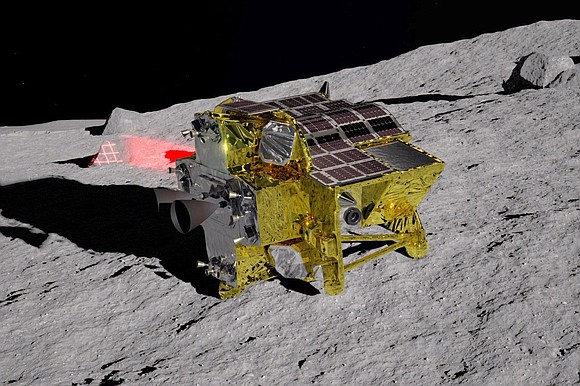Japan’s lunar lander on moon - status unclear
CNN/Stylemagazine.com Newswire | 1/19/2024, 10:01 a.m.

Originally Published: 19 JAN 24 06:39 ET
Updated: 19 JAN 24 10:48 ET
By Ashley Strickland, CNN
Editor's note: Sign up for CNN’s Wonder Theory science newsletter. Explore the universe with news on fascinating discoveries, scientific advancements and more.
(CNN) — Japan’s “Moon Sniper” robotic explorer has reached the lunar surface, but the condition of the spacecraft is still unknown, the Japan Aerospace Exploration Agency said.
The uncrewed Smart Lander for Investigating Moon, or SLIM, mission landed just after 10:20 a.m. ET Friday (12:20 a.m. Saturday Japan Standard Time), according to telemetry data shared on JAXA’s live broadcast.
The agency said they are still checking on the status of the lander and would provide further updates during a press conference.
If the landing was successful, it would make Japan the third country this century — and the fifth ever — to put a spacecraft safely on the lunar surface.
The small-scale SLIM robotic explorer, which launched in September, goes by the nickname “Moon Sniper” because it carries new precision technology to demonstrate a “pinpoint” landing.
Previous lunar missions have been able to target and reach specific zones that spanned many kilometers, but the SLIM lander will target a landing site that stretches just 100 meters (328 feet) across. The lander’s “smart eyes” — an image-matching-based navigation technology — rapidly photographed the lunar surface on approach and autonomously made adjustments as the spacecraft descended for a more precise touchdown on a sloped surface.
Moon Sniper’s journey
The Moon Sniper is targeting a landing site near the small Shioli crater within a lunar plain called the Sea of Nectar that was created by ancient volcanic activity and lies just south of the Sea of Tranquility, where Apollo 11 landed in 1969. If the lander touches down successfully, it will briefly study rocks at the site that could reveal insights into the moon’s origin.
When meteorites and other objects strike the moon, they create craters as well as rocky debris that litters the surface. These rocks intrigue scientists because studying them is effectively like peering inside the moon itself. Minerals and other aspects of the rocks’ composition can potentially shed more light on how the moon formed.
Landing near the sloped, rock-strewn areas around craters is a hazardous process that most missions usually avoid, but JAXA believes its lander has the technology to touch down safely on rocky terrain.
New space race
Multiple space agencies and countries have attempted moon landing missions over the past year, leading to a historic first as well as failures.
India became the fourth country — after the United States, the former Soviet Union and China — to execute a controlled landing on the moon when its Chandrayaan-3 mission arrived near the lunar south pole in August.
Meanwhile, Japanese company Ispace’s Hakuto-R lunar lander fell 3 miles (4.8 kilometers) before crashing into the moon during a landing attempt in April. Russia’s Luna-25 also crash-landed in August during the country’s first attempt to return to the moon since the Soviet Union’s fall. Astrobotic Technology’s Peregrine spacecraft — the first US lunar lander to launch in five decades — met a fiery end Thursday after a critical fuel leak made safely landing on the moon out of the question.
Part of the motivation behind the new lunar space race is a desire to access water trapped as ice in permanently shadowed regions at the lunar south pole. It could be used for drinking water or fuel as humanity pushes the bounds of space exploration in the future. This region is riddled with craters and strewn with rocks, leading to narrow landing sites.
If successful, the lightweight SLIM lander might be an effective design that could not only land in small areas of interest on the moon but also on planets such as Mars, according to JAXA.
The-CNN-Wire









